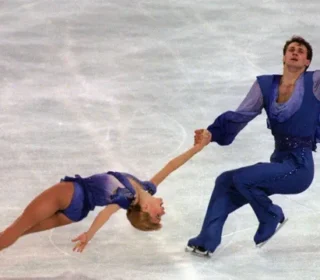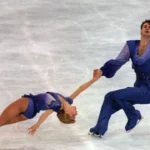Paris Mayor Anne Hidalgo has stirred up a fresh debate in the City of Light with her proposal to keep the Olympic rings affixed to the Eiffel Tower, long after the conclusion of the Paris 2024 Games. Her vision is to preserve the “festive spirit” of what she hopes will be a successful Olympics, allowing the rings to serve as a lasting symbol of the city’s achievement. However, not everyone shares her enthusiasm, and the plan has quickly become a flashpoint in the city’s political landscape.
A Political Maneuver or a Symbol of Pride?
Hidalgo’s rivals accuse her of using the iconic monument as a platform for political gain, with the next mayoral election looming in 2026. One of her main opponents, Rachida Dati, the outgoing culture minister and current mayor of the arrondissement that houses the Eiffel Tower, could potentially be her competition. Dati’s ally, right-wing city councilor David Alphand, criticized Hidalgo for attempting to capitalize on the positive outcomes of the Olympics, accusing her of “political opportunism.”
“The Eiffel Tower was not made to hang anything and everything on it,” Alphand remarked, reflecting a broader sentiment among those who view Hidalgo’s move as more about politics than pride.
Olympic Promises and the City’s Return to Normalcy
Paris 2024 was marketed to the French public with a promise to host the “greenest Games in history,” focusing on sustainability by utilizing preexisting infrastructure and keeping costs under control. This included the integration of temporary venues in central Paris, using iconic landmarks like the Eiffel Tower as a dramatic backdrop for events such as the opening ceremony and beach volleyball.
The understanding was that, once the Games concluded, these temporary structures would be removed, and the city would largely return to its pre-Olympic state. Hidalgo’s proposal to keep the Olympic rings in place challenges this commitment, suggesting a more permanent alteration to Paris’s famed skyline.
Resistance from the Eiffel Family and Heritage Defenders
Hidalgo’s idea has also sparked resistance from an unexpected quarter: the descendants of Gustave Eiffel, the engineer behind the Eiffel Tower. Olivier Berthelot-Eiffel, a great-great-grandson of Eiffel and chair of an association of his descendants, has publicly voiced opposition to the plan. “The rings completely break the design of the monument … it does not respect the work of our ancestor,” Berthelot-Eiffel stated, marking the first time the Eiffel family has taken a public stance on modifications to the tower.
Heritage groups, such as “Sites & Monuments,” France’s oldest heritage defense association, have also weighed in. President Julien Lacaze criticized Hidalgo’s proposal as a self-promotional stunt, accusing her of “latching onto the Eiffel Tower like a parasite” to gain political mileage. He stressed that the tower should remain an unaltered symbol of France, respected and protected as it has been for over a century.
The Precedent of Temporary Decorations
While the Eiffel Tower has occasionally been used for temporary displays, including political messages and commercial promotions, these installations have always been short-lived. Even Citroën once lit up the tower for advertising purposes, and recent messages of solidarity have been displayed, such as those supporting Ukraine. However, these decorations were never meant to alter the tower’s appearance permanently.
In an interview with Ouest France, Hidalgo defended her plan, noting that the Eiffel Tower is owned by the city of Paris, and any changes would need approval from the International Olympic Committee, which strictly regulates the display of the Olympic rings. Meanwhile, Dati, taking a more measured stance, highlighted on social media that the tower is a protected monument and any modifications would require thorough impact assessments and compliance with strict regulations.
The Next Steps
Despite Hidalgo’s enthusiasm, the current 30-ton steel rings cannot remain on the Eiffel Tower permanently due to their weight. Hidalgo has proposed replacing them with lighter versions if her plan moves forward. Whether the rings stay or go, the decision will undoubtedly serve as a litmus test for how Parisians — and indeed the world — balance the celebration of modern achievements with the preservation of historical heritage.
As Paris grapples with this debate, the future of its most iconic monument hangs in the balance, caught between a desire to honor the past and a push to celebrate the present. Whatever the outcome, the controversy has underscored the powerful emotions and deep-seated opinions that the Eiffel Tower continues to evoke, more than a century after it first rose above the Parisian skyline.

















